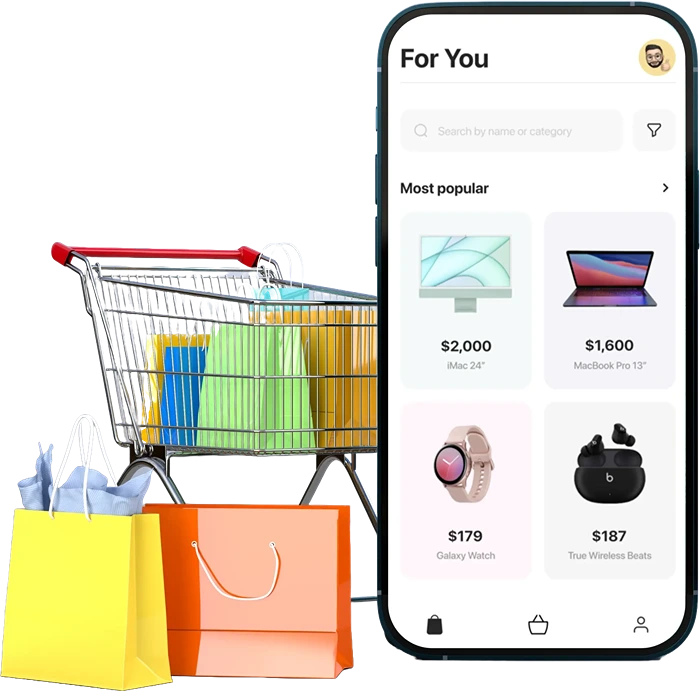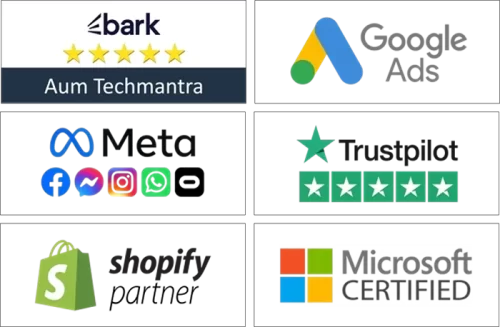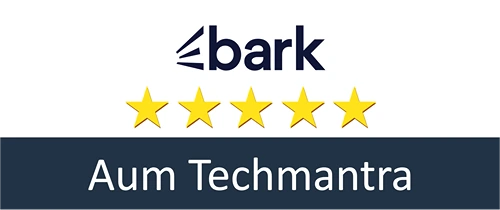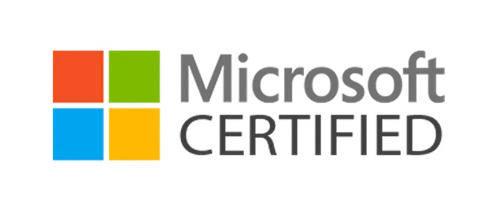
Enabling
You ITically
Digitalise Your Business →
Plan.
Build.
Scale.
We don’t just build e-commerce websites—we create powerful digital storefronts that drive sales, enhance user experience, and maximize business growth.
67%
Mobile-Friendly Webs Make More Sales
83%
Small Businesses Started Selling Online
71%
Businesses have Websites, Globally
73%
E-commerce Sales would be thru Mobiles

Pricing of E-comerce Website
Your E-commerce website serves as the digital storefront of your business, akin to a brick-and-mortar establishment where the customer experience holds significant importance. Just as customers form impressions before stepping through physical doors, the perception they have of your brand online greatly impacts their engagement. At our company, we recognize the pivotal role of a well-crafted website in shaping these perceptions.
Our pricing philosophy is deeply rooted in principles of honesty, integrity, and the firm belief that our clients deserve tangible value for their investment. We prioritize long-term relationships, ensuring that our clients not only receive exceptional service but also feel valued and supported throughout their journey with us.
Whether you’re launching a new store or upgrading an existing one, we provide scalable, high-performance platforms tailored to your business needs.
Ready to
Digitalise
Your Business?
Connect Us!

E-commerce Web Development Plans & Pricing
E-COMMERCE WEB
SINGLE PLAN
₹ 75,000/- ₹ 40,000/-
Features Included
30 Products Listing From Our Side
Get Additional Product Listed
Expanding your e-commerce store? You can list additional products on your website beyond the initial package. This service allows you to continuously update and grow your online store, ensuring that your customers always have access to your latest offerings.
Each additional product listing requires processing, optimization, and integration to maintain a seamless shopping experience, fast loading times, and proper categorization. A nominal fee applies per product, covering the time and resources needed to ensure high-quality display, accurate descriptions, and a smooth user experience. Keep your store fresh and competitive by adding new products effortlessly!
5 Free Email IDs
Platform Charges Extra
Annual Maintenance Contract Rs. 15,000/-
Payment Gateway Integration
COD Payment Option
OTP Verification Features
Cart & Checkout Page
Coupon Feature
Auto Invoice Bill Generator Features
Order Notification Features
Customer My Account / Order History
Order Management / Shipping
Product Variation Features
Product Reviews
Sales Report Feature
Contact Form
Images & Videos Upload- as per Need
1 Year Free Domain Name (.com .in)
1 Year Free Hosting Support
1 Year Free SSL Certificate
Admin Access
Multiple Users' Logins
Mobile Friendly (Responsive)
SEO Friendly Website
Social Media Integration
Live Chat Integration
WhatsApp Button Integration
Call Button Integration
E-COMMERCE WEB
MULTI-VENDOR PLAN
₹ 1,20,000/- ₹ 70,000/-
Features Included
30 Products Listing From Our Side
Get Additional Product Listed
Expanding your e-commerce store? You can list additional products on your website beyond the initial package. This service allows you to continuously update and grow your online store, ensuring that your customers always have access to your latest offerings.
Each additional product listing requires processing, optimization, and integration to maintain a seamless shopping experience, fast loading times, and proper categorization. A nominal fee applies per product, covering the time and resources needed to ensure high-quality display, accurate descriptions, and a smooth user experience. Keep your store fresh and competitive by adding new products effortlessly!
5 Free Email IDs
Platform Charges Extra
Annual Maintenance Contract Rs. 25,000/-
Payment Gateway Integration
COD Payment Option
OTP Verification Features
Cart & Checkout Page
Coupon Feature
Auto Invoice Bill Generator Features
Order Notification Features
Customer My Account / Order History
Order Management / Shipping
Product Variation Features
Product Reviews
Sales Report Feature
Contact Form
Images & Videos Upload- as per Need
1 Year Free Domain Name (.com .in)
1 Year Free Hosting Support
1 Year Free SSL Certificate
Admin Access
Multiple Users' Logins
Mobile Friendly (Responsive)
SEO Friendly Website
Social Media Integration
Live Chat Integration
WhatsApp Button Integration
Call Button Integration
E-COMMERCE WEB
CUSTOM PLAN
(As per the Project)
Features Included
Products Listing - as per Requirement
Get Additional Product Listed
Expanding your e-commerce store? You can list additional products on your website beyond the initial package. This service allows you to continuously update and grow your online store, ensuring that your customers always have access to your latest offerings.
Each additional product listing requires processing, optimization, and integration to maintain a seamless shopping experience, fast loading times, and proper categorization. A nominal fee applies per product, covering the time and resources needed to ensure high-quality display, accurate descriptions, and a smooth user experience. Keep your store fresh and competitive by adding new products effortlessly!
20 Free Email IDs
Platform Charges Extra
Annual Renewal for 20%
For uninterrupted performance and seamless customer experience, e-commerce websites require reliable hosting. As part of our website development process, an annual renewal fee of 20% of the basic cost is applicable for the services. This ensures that your online store remains accessible, secure, and fully operational at all times.
The renewal fee covers essential services such as server maintenance, security updates, technical support, and infrastructure management, ensuring smooth transactions and optimal website performance. By maintaining this annual renewal, we help keep your e-commerce platform running efficiently, safeguarding your online presence and supporting your business growth.
Payment Gateway Integration
COD Payment Option
Cart & Checkout Page
Wishlist Feature
Coupon Feature
E-commerce Features
Auto Invoice Bill Generator Features
Order Notification Features
OTP Verification Features
Customer My Account / Order History
Order Management / Shipping
Product Variation Features
Product Reviews
Sales Report Feature
UX/UI Designed Website
Enquiry Forms - as Many as Needed
Images & Videos Upload- as per Need
1 Year Free Hosting (Unlimited Space)
1 Year Free Domain Name (.com .in)
1 Year Free Tech Support for Website
1 Year Free Hosting Support
1 Year Free SSL Certificate
Admin Access
Multiple Users' Logins
Mobile Friendly (Responsive)
SEO Friendly Website
Social Media Integration
Live Chat Integration
WhatsApp Button Integration
Call Button Integration
Google Map Integration
Frequently Asked
Questions

How is the pricing for e-commerce websites determined?
The pricing for e-commerce websites is typically based on various factors such as the complexity of the design, the number of products to be listed, the required features and functionalities, and the level of customization needed. Additionally, factors like integration with payment gateways, shipping options, and inventory management systems also influence the overall cost.
Are there any recurring costs associated with e-commerce website development?
Yes, there are recurring costs involved in maintaining an e-commerce website, such as domain renewal fees, hosting charges, and any third-party service subscriptions like payment gateways or SSL certificates. Additionally, ongoing maintenance and updates to ensure the security and functionality of the website may also incur periodic costs.
Can I get a breakdown of the pricing for an e-commerce website?
Certainly! Our pricing model is transparent, and we provide a detailed breakdown of the costs involved in developing an e-commerce website. This includes design and development fees, costs for integrating essential features like product listings, shopping cart functionality, payment gateways, and any additional customizations requested by the client.
How can I ensure that I get the best value for my investment in an e-commerce website?
To ensure you get the best value for your investment, it’s essential to clearly define your business goals and requirements upfront. Communicate your expectations to our team, and we’ll tailor a solution that aligns with your budget and objectives. Additionally, investing in features that enhance user experience, streamline operations, and drive sales can yield long-term returns. We also offer ongoing support and maintenance services to optimize your website’s performance and ensure its continued success.
Still have a Questions? Cann’t find the answer you are looking for? Let’s connect!
Featured Blog
Real Estate and IT Solutions. Discover the Connection
Take Your Business Online and Learn ‘How to?’
Know about E-commerce Website and How to Start It?
How
can We
Support You?
We Partner with:








